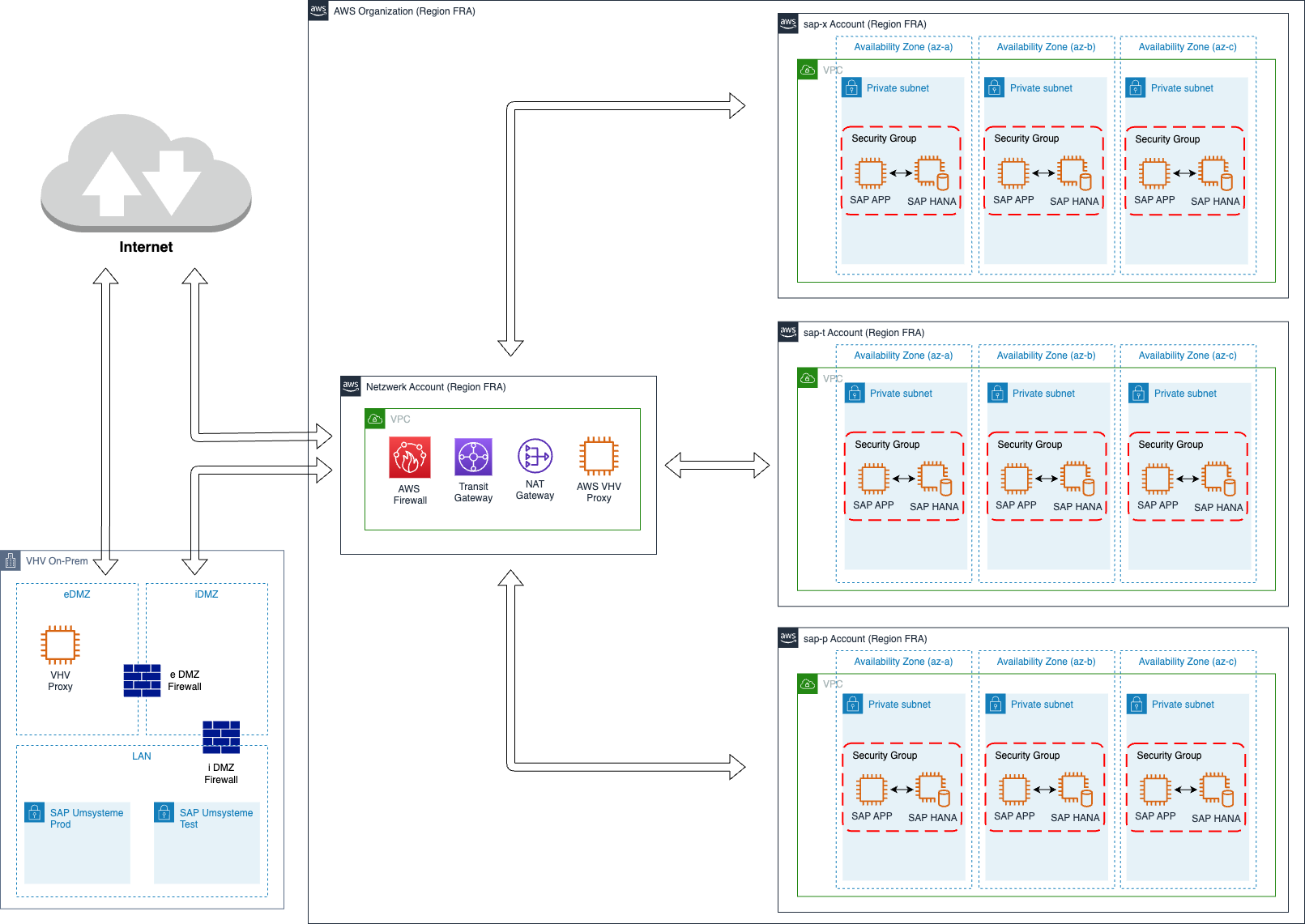Introduction
To maintain an innovative, flexible, and cost-effective IT landscape, the Finance Group decided to migrate its legacy SAP ERP to S/4HANA in the AWS Cloud.
The Challenge
This migration encompassed various application servers and database systems, including SAP ERP (HR/HCM), SAP ERP (NV), and SAP BW. Collaboration with an experienced and trustworthy partner was crucial for the customer.
Project Objectives - Organizational:
- Implementation of the new environment and project completion within a defined timeframe.
- Ensuring continuous availability of the existing environment for end-users during the project phase.
- Developing a secure and tested fallback scenario in case of issues with the new Cloud environment.
- Transitioning the project to standard operation (BAU – Business As Usual).
- Knowledge transfer to the client's operations organization for secure and ongoing stable operation.
- Documentation update, including the operations manual.
Project Objectives - Technical:
- Migration of approximately 40 SAP systems (ERP, BW, HR, Solution Manager, HANA Cockpit, Netweaver Java) to the AWS Cloud.
- Ensuring a smooth cloud enablement for business units and the IT organization.
- Successful change management, particularly regarding the cultural shift within the organization.
- Fully functional SAP systems/landscape in terms of KPIs for performance and availability.
- Setup of monitoring and reporting tools for the client.
- Fulfillment of all security requirements regarding availability, confidentiality, and integrity.
- Minimal to no downtimes during migration from the end-user perspective.
- Successful implementation and testing of backup & recovery procedures for the new Cloud environment, including Disaster Recovery (DR).
The Solution

The architecture diagram illustrates the technical architecture of the SAP system landscape in the AWS Cloud. The landscape comprises a set of AWS services, including:
- EC2 Instances: EC2 instances serve as application servers for SAP systems.
- RDS for SAP HANA: RDS for SAP HANA databases are used for storing SAP data.
- S3: S3 data storage is utilized for storing backups and other data.
- CloudWatch: CloudWatch is employed for monitoring and reporting on SAP systems.
The SAP systems are distributed across two regions to enhance availability. The regions are interconnected through AWS Direct Connect to ensure fast and reliable data transfer.
The EC2 instances come pre-configured with SAP software, allowing for quick and easy deployment.
RDS for SAP HANA databases are optimized for the performance and reliability of SAP systems. S3 data storage provides a cost-effective and scalable solution for storing backups and other data.
CloudWatch offers comprehensive monitoring and reporting for SAP systems.
Results and Benefits
The architecture offers several advantages, including:
- Availability: Distributing SAP systems across two regions increases availability.
- Scalability: SAP systems can be scaled as needed to meet the company's requirements.
- Security: SAP systems are protected by a set of security measures.
The architecture diagram demonstrates how an SAP system landscape can be structured in the AWS Cloud. The architecture provides a range of benefits, including availability, scalability, and security.
Outlook
The Finance Group plans to migrate additional SAP systems to the AWS Cloud in the future. Cloud migration provides the company with various advantages, including cost savings, flexibility, scalability, and security.
About PCG
Public Cloud Group (PCG) supports companies in their digital transformation through the use of public cloud solutions.
With a product portfolio designed to accompany organisations of all sizes in their cloud journey and competence that is a synonym for highly qualified staff that clients and partners like to work with, PCG is positioned as a reliable and trustworthy partner for the hyperscalers, relevant and with repeatedly validated competence and credibility.
We have the highest partnership status with the three relevant hyperscalers: Amazon Web Services (AWS), Google, and Microsoft. As experienced providers, we advise our customers independently with cloud implementation, application development, and managed services.